I’m not someone who obsesses over tiny details in pictures, but like most of you, I do want my photos to look pretty sharp and clear, and too much graininess usually doesn’t look nice. So, knowing how to get the best possible results in low-light conditions is really important. The problem is that many of us photographers have a somewhat incorrect understanding of ISO – I did to.
It doesn’t help if you come from the analog era like I do, where we used terms like ASA (American Standards Association) and DIN (Deutsches Institut für Normung) to indicate the sensitivity of film. We mainly had 100 ASA or 21 DIN, 200 ASA or 24 DIN, and 400 ASA or 27 DIN. 800 ASA or 30 DIN was already quite rare. The higher the number, the more sensitive the film, but also the larger the film grains, it was that simple.
So far, this fits perfectly with what most of us have learned : the exposure triangle, with Film capturing the light, Shutter, and Aperture controlling the amount of light.
But, Digital has changed that. Confusion has arisen, different opinions from individuals, and the commercial world has also contributed to the confusion, not to mention the influence of the Internet and Social Media.
If you’re like me, and you like looking at pictures from fellow bird and wildlife photographers with various cameras, some full frame, others APS-C and M4/3, and you are also interested in EXIF data,
then after a while it becomes noticeable that, in terms of image quality, there is sometimes little or no difference in a large or small sensor.
Sometimes you come across pictures from a full frame camera, that are much noisier than other taken with a micro 4/3 camera.
Of course, the lighting conditions are never the same, and the aperture and shutter settings are also different, not to mention the lens.
But if it’s not the size of the sensor, what is it ?
Well, just to be clear and before anyone starts misunderstanding my story, a full frame sensor is better, and that makes sense.
So, why are some photos from a full frame camera worse than some taken with a micro 4/3 camera ?
A while ago I was looking for ways to better tackle noise in photos, and then I came across this : High ISO does NOT cause NOISE! (but f/Stop & Shutter do!). From this well-known author, photographer, influencer, I had seen several videos with bold statements before, so I wasn’t completely shocked. And although these types of bold statements are mainly intended as click bait, and even though it seems like pure nonsense at first glance, there might be some truth behind it.
So I decided to do some research, and really, it’s not so easy to understand, but to get started you need some basic concepts of digital cameras – Most you will know, some you may not :
- A camera sensor doesn’t have different sensitivities like various rolls of film; it has one basic sensitivity, usually between 100 and 200 ISO – this is called Sensor Base ISO – Olympus E-M1 MKIII & E-M1X & OM1 : Base ISO is 200.
- Setting ISO is like adjusting the volume on your sound amplifier; you can make it quieter or louder. The idea is : a basic electrical sound signal is amplified by an amplifier – It is the same with ISO, a basic electrical image signal is amplified by an amplifier
- If your sound amplifier is at a fairly loud setting, and you don’t play any music, you would hear a lot of noise, that’s background noise, static noise, amplifier noise etc. In photography, it also comes in different forms: Shot Noise, Photon noise, Front and Backend noise etc – it’s the noise that’s already present before the image comes in.
- The lens glass concentrates as much light as possible onto your sensor/film. The aperture controls by making the opening bigger or smaller, how much light falls on that sensor/film.
- The shutter controls the amount of light hitting your sensor/film by opening and closing for a certain amount of time, exposing the sensor/film to light for longer or shorter periods.
- A Full Frame sensor with 20MP is better at capturing light in dim conditions compared to a M4/3 sensor with 20MP. This is because the pixels on the Full Frame sensor are larger, so they can gather more light.
- If we compare sensors of the same size, whether it’s Full Frame, APS-C, or M4/3, with 16MP and 20MP, the 16MP sensor will be better at capturing light in low-light situations than the 20MP one. This is because the pixels on the 16MP sensor are larger than the 20MP sensor on the same size sensor.
Most reader photographers will say that they have known all or most of this for a long time, it is all logical and clear. And yet there are serious debates and disagreements about this on forums – just look at the comments on YouTube about the video of High ISO does NOT cause NOISE! (but f/Stop & Shutter do!)
Lots of funny comments such as “the fourth corner of the exposure triangle”, many viewers’ own personal or technical opinions, and also a lot of mockery of the host, including this one : “It’s kind of like saying, jumping off a building doesn’t kill you, it’s the sudden impact at the end that does”, but that is precisely the truth and the intention of the host – only he uses a strong statement as click bait, by removing ISO from the exposure triangle, and concealing what it is actually about, and that is LIGHT.
FACT : A strong electrical signal, in other words : lots of light ! – means you’ll have less noise, no matter what ISO setting you use.
Now, let’s flip that statement around: regardless of the ISO setting, with a fixed amount of light, the noise remains the same. So, turn off your camera’s noise reduction and Imagine you take a photo at ISO 100, with, say, f2.8 and 1/60 in very low light conditions. Then, under the same lighting conditions, take another photo at f2.8 and 1/60 but at ISO 1200. On your computer, adjust the exposure of the darker photo to match the brightness of the first one. You’ll find that the noise in both photos is about the same, this is called : ISO Invariance – do the test at home if you have any doubts about this, but on DPReview you can see from various camera sensors that this is correct (link below).
FACT : ISO Invariance, simply put, is that the output from your camera remains the same, whether you’re using ISO 100 or 1200 or higher.
But remember, not every camera is ISO Invariant, although most modern sensors and cameras are. You can search online to find out if your camera is ISO Invariant or check out a test on DP Review (link below). However, as I mentioned earlier, there are still factors that can cause differences. Anyway, this knowledge is very interesting and can be advantageous when you’re out shooting.
Tests I’ve conducted with the Olympus E-M1 Mark III show that this camera is ISO Invariant :
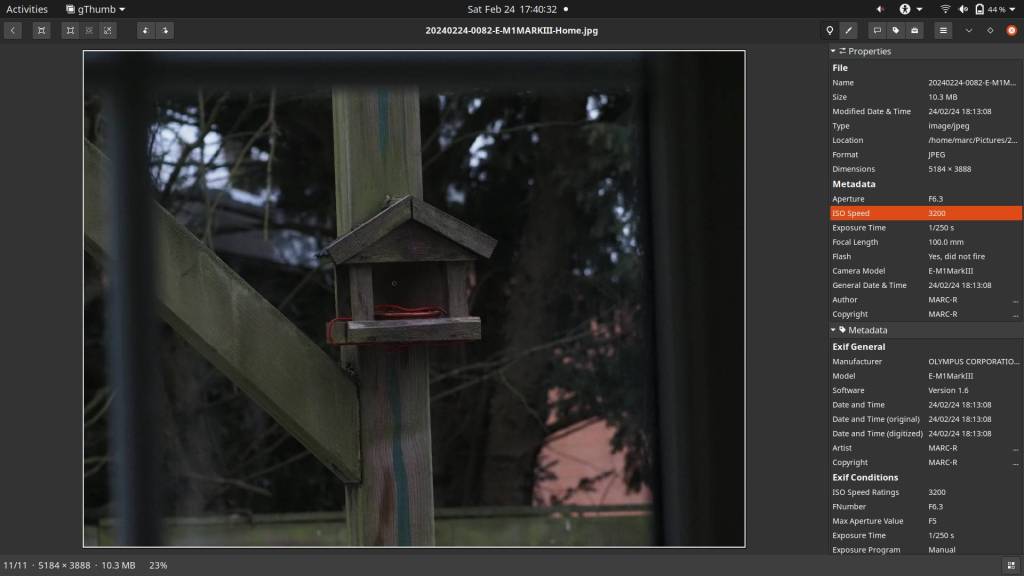
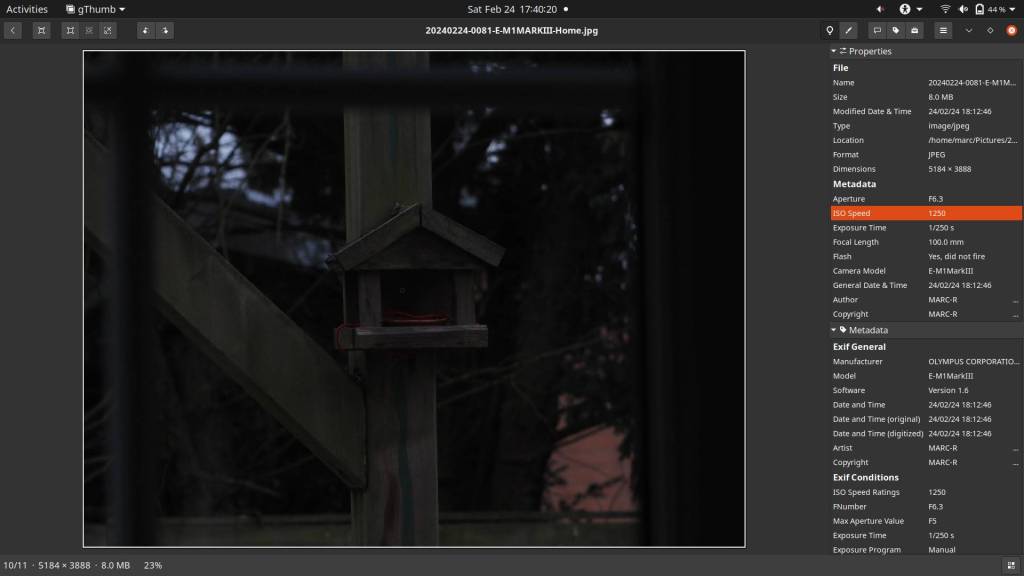
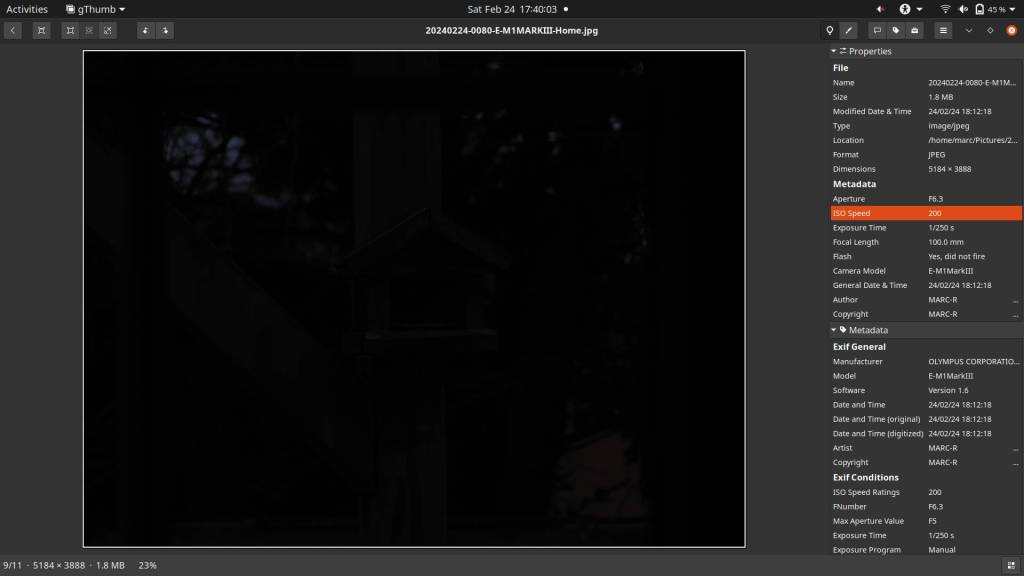
After taking three photos at ISO 200, 1250 and 3200 respectively, with the same aperture and exposure, I’ve set them approximately the same in terms of exposure in Rawtherapee.
That way I could compare the amount of noise present.
It was a simple, quick and dirty test, but nevertheless the results are telling.
You can find other tests on the internet, perhaps more elaborate, but with the same result.
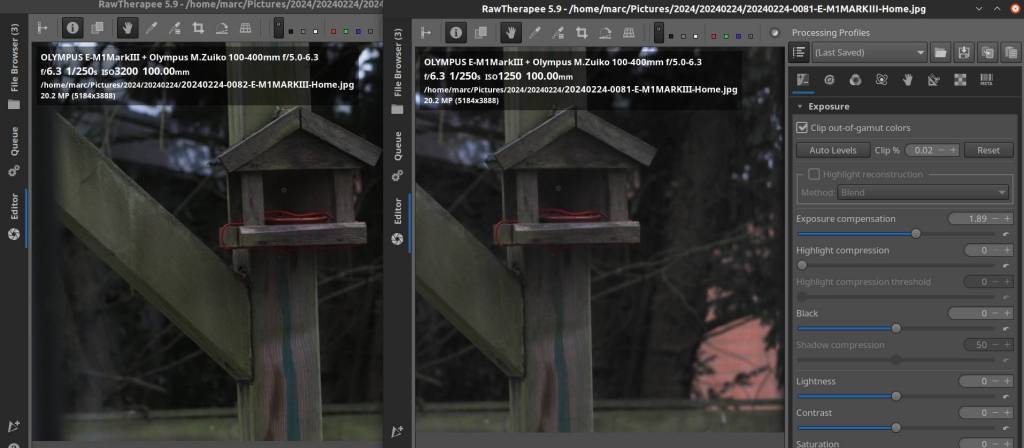
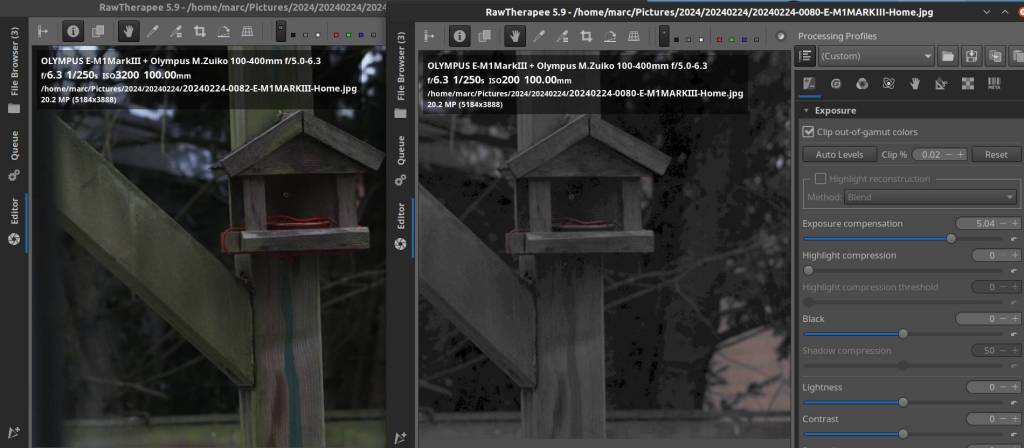
The photo with ISO 200 obviously needs to be amplified the most, and the color and dynamics have completely collapsed. You can find pictures on the internet that look much cleaner than mine, but they are usually all studio shots with artificial light and tripod, and this was simply photographed “through the window”. But even here you still see that 3200 does not have more noise. In fact, if you compare the results of the 3200 – 1250 closely, you would even say that the 1250 contains more noise than the 3200. That’s also normal, it’s the amplifying in post that causes that.
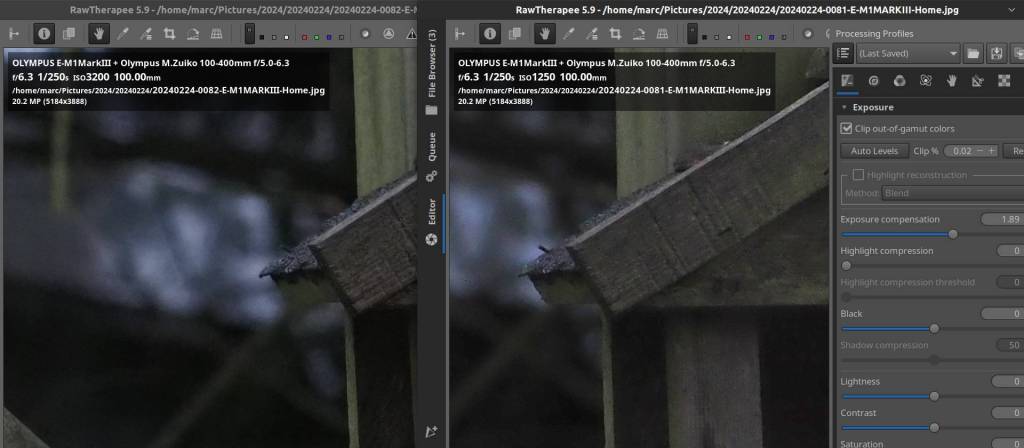
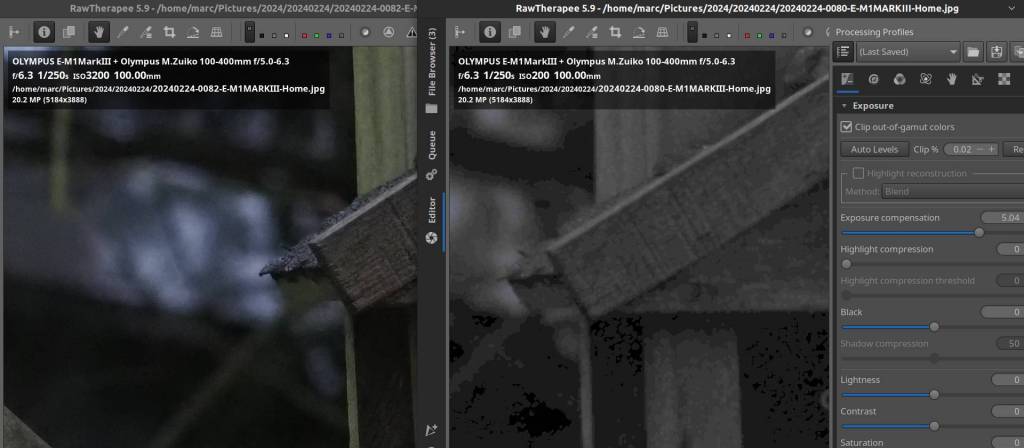
Also the older Olympus E-M1X and the new OM-1 are ISO Invariant, and that’s good news because knowing this, and choosing the best settings for aperture and shutter speed regardless of the set ISO, can help you achieve better photo results with less noise.
For example :
When photographing animals in nature : if you set your camera to auto ISO and manual mode, you can adjust the shutter speed and/or aperture depending on the situation and what’s more important at that moment : Speed or Depth of Field. This way, you can maximize the light hitting your sensor -> as more light means less noise !
If you want to capture a moving bird and need to use a faster shutter speed, it’s crucial to choose a shutter speed that just freezes the motion, rather than opting for, say 1/8000 just to be safe -> as that would inevitably result in more noise !
Now, I already wrote that the info here was going to be in a nutshell.
So, yes, there are factors that still influence the noise, and also influence dynamic range etc.
So it’s not all just pretty music here.
But, you can use it to your advantage as much as possible by thinking about:
- shooting RAW -> Best format for editing
- Manual mode, Aperture or Shutter Priority -> Aperture as open as possible, and speed as low as possible, and this is linked to the subject to be photographed -> To allow as much light as possible !
- Auto ISO -> To get the shot in almost any lighting conditions ( view this : Auto ISO Simon d’Entremont)
- Light-sensitive lenses -> Obviously !
In summary : if you take (bird and wildlife) pictures in poor lighting conditions, and want the best sharp and least noisy pictures, use Auto ISO from 200 – 6400, shoot RAW and manual.
But the most important thing is that you don’t count on that Auto ISO, but optimize your exposure to let in as much light as possible, adapted to the circumstances and the subject.
It goes without saying that choosing a good and light-sensitive lens also has a major influence on the above.
By the way, this is one of the reasons why the Olympus 300mm f4 Pro delivers such good results – you just have to use it correctly.
And this works for almost any camera from any brand. I dare say with confidence that even not ISO Invariance cameras wil perform better, because in the end, one thing always remains the same, more light = less noise !
One more thing, what about the ISO 25600 in the title ? of course it is to attract attention. However,
Sometimes making the shot is almost more important than the result,
in this case, with the knowledge above and with the best possible aperture and shutter settings, you will make a better picture than someone who does not have that knowledge.
Have fun testing and enjoy your improved pictures !
Info and Links :
ISO Invariance Test on DP Review
E-M1mkII ISO Invariance and further ISO testing
E-M1 Iso Invariance Test – Thomas Stirr
Olympus OM-D E-M1 Mark III review – DPReview
More info ? = Google and testing 🙂
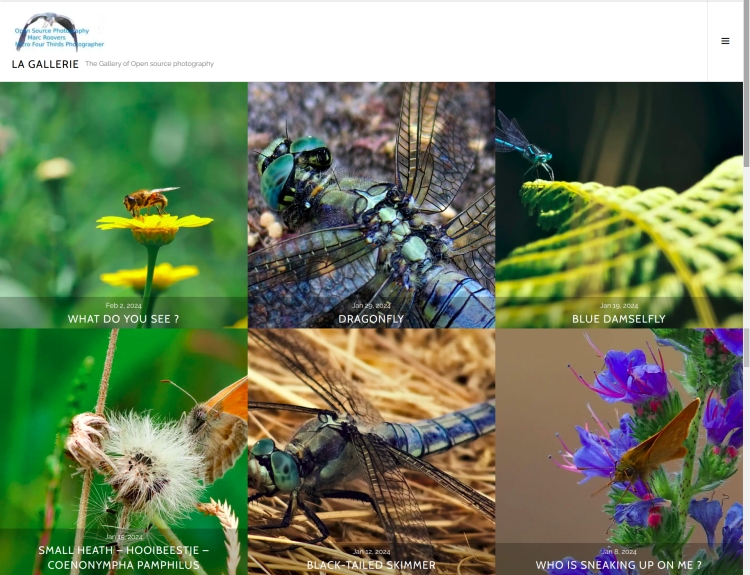
The photo gallery of Open Source Photography, Olympus micro 4/3 system, Vintage Lens Photograpy, Film Simulation, PictureFX, HDR – Photographer : Marc R.
Discover more from Open Source Photography
Subscribe to get the latest posts sent to your email.


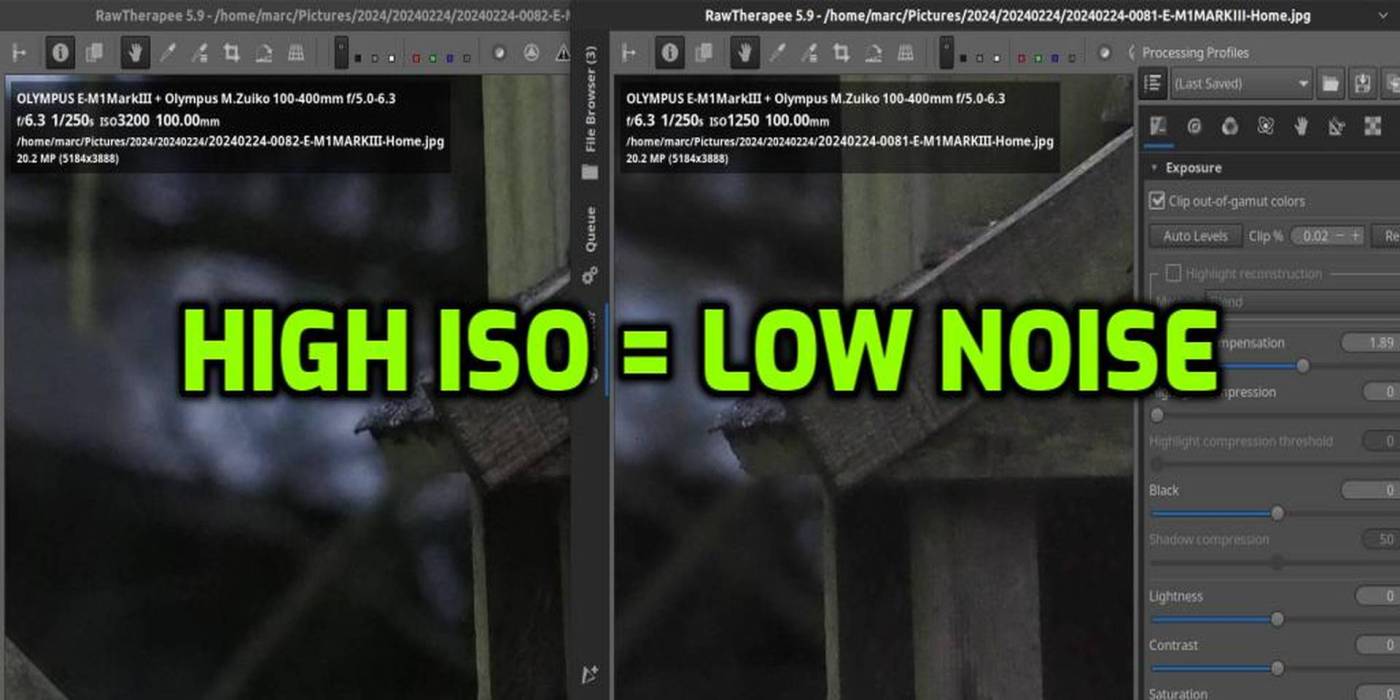

After watching Simon’s YT channel, I tested my camera for ISO noise and was pleasantly surprised how high I could set it and still have acceptable quality.
LikeLiked by 1 person
Hello Berny,
Glad to hear it helped you.
With today’s cameras you can indeed get away with a much higher ISO than expected.
One more tip, take a look at this video from Simon, it goes into more detail about the video you have already seen, and also explains the problem better: https://youtu.be/il28la8DRCU?feature=shared
Ultimately, one thing matters: get the shot ! even if you need a higher ISO.
Thank you for your visit and your comments,
it is certainly appreciated.
Marc.
LikeLike
Good story! Thanks.
LikeLiked by 1 person
Altijd fijn om te horen !
LikeLike